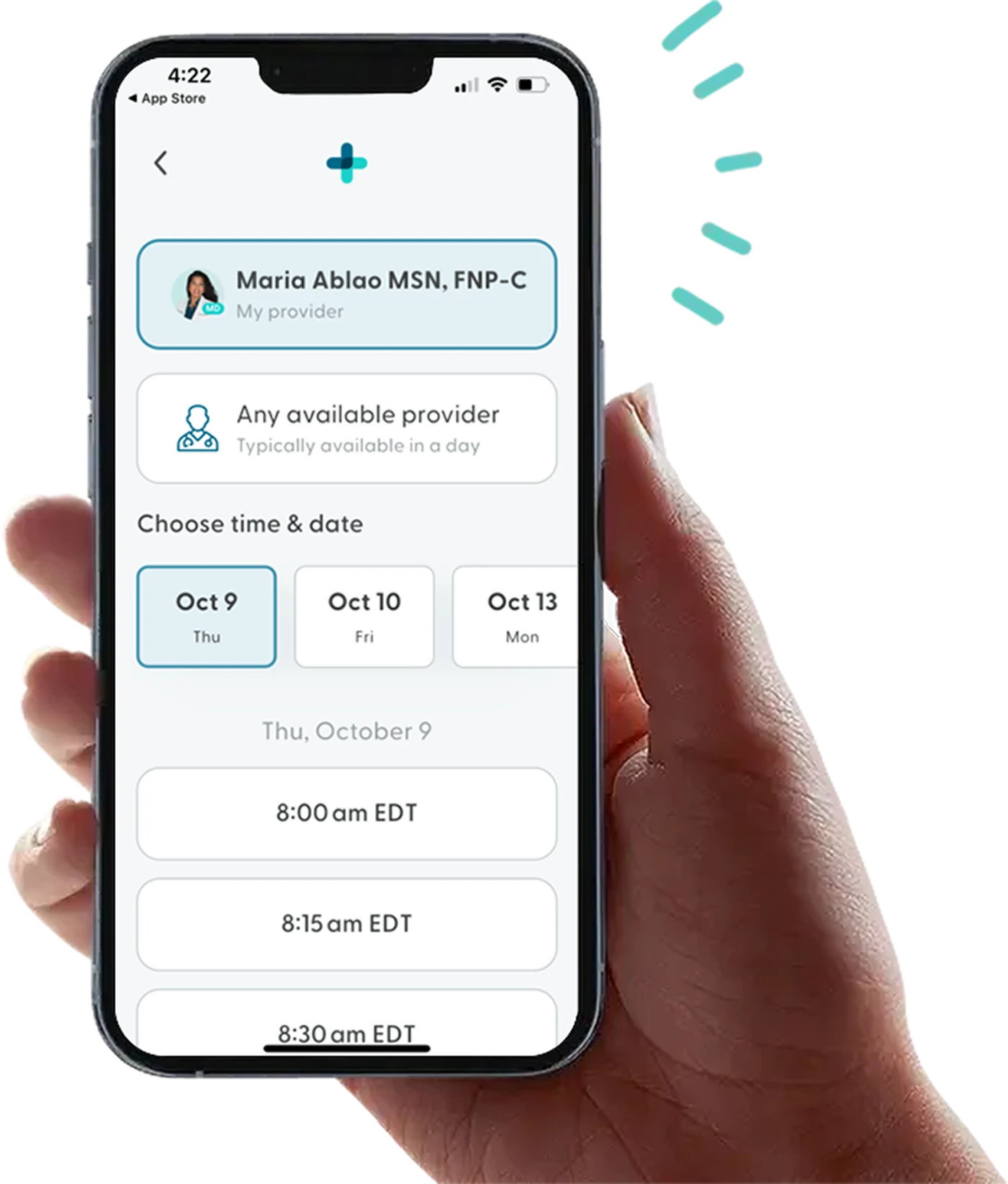Navigating a Soy-Free Diet: Tips and Tricks for Beginners
Most people with a soy allergy grow out of it into adulthood. Because of its presence in many packaged foods, soy can be difficult to avoid entirely.
It may not always be immediately evident which foods are soy-free. A wide variety of foods like edamame, ice cream, and miso contain soy. However, purchasing alternative food options and intentionally cooking without soy-based ingredients can help you avoid exposure.
Food allergies affecting your daily life?
Speak to a healthcare provider online about your allergy symptoms today.


What is a Soy Allergy?
Those with a soy allergy experience an immune response when consuming soy products. The immune system perceives soy as a threat and activates the immune system to protect the body.
It’s one of the nine main allergens identified by the U.S. Food and Drug Administration (FDA). Those with a soy allergy avoid soy-based foods to prevent an allergic reaction.
What are the Symptoms of a Soy Allergy?
Symptoms of a soy allergy vary depending on the severity. If someone has a soy allergy, they may experience the following symptoms:
Hives
Dizziness
Wheezing
Diarrhea
Indigestion
Abdominal pain
Vomiting
If you experience trouble breathing or other severe symptoms, reach out for emergency assistance as soon as possible. Anaphylaxis is a life-threatening response to allergens that requires immediate medical assistance.
Tips for Following a Soy-Free Diet
One of the best ways to reduce the risk of soy exposure is to carefully read the nutrition labels of packaged foods. The FDA requires manufacturers to list on nutrition labels when one of the nine major allergens is an active ingredient in foods.
Manufacturers tend to list allergens right under the main ingredients list or in parentheses after a specific ingredient. On some products, allergens may be listed in bold font.
When eating out at restaurants, notify staff if you have a soy allergy. While the risk of cross-contamination is higher when eating out, they can reduce the risk by preparing your food separately.
What Foods Should You Avoid with a Soy Allergy?
If you have a soy allergy, the first step is knowing which foods to avoid. The following foods are rich in soy:
Edamame
Processed meats
Miso
Soy milk
Soy sauce
Tempeh
Soybeans
Tofu
Some vitamins, medications, household products, and cosmetics may contain soy. Be sure to let your healthcare provider know if you have a soy allergy. They may provide alternate options for medications and treatments.
The following items may indicate some traces of soy in packaged foods:
Hydrolyzed vegetable protein (HVP)
Stabilizer
Vegetable gum
Vegetable starch
Soya
Vegetable shortening
A healthcare provider may recommend carrying an EpiPen (epinephrine injection) to those with a severe soy allergy. An EpiPen can help alleviate symptoms until emergency medical attention arrives.
Alternative Foods to Add to Your Diet with a Soy-Free Diet
Your local grocery store may carry many soy-free alternatives for your favorite foods. Many frozen foods and meat substitutes don’t contain soy.
Soy-free foods safe to add to your diet include:
Almond milk
Lentils
Fresh fruit
Tomato-based sauces
Sweet and sour sauce
Tea
Coffee
Soy margarine
Balsamic vinegar
Wheat-free pasta
Popular soy-free snacks to enjoy:
Cheerios
Goldfish crackers
Pretzels
Ritz toasted chips
Skittles
Tips for Cooking with Soy-Free Ingredients
Those with a soy allergy can make small changes in how they cook at home to manage symptoms. Soybean oil has low levels of soy protein. However, some people may still experience mild symptoms from ingesting it.
The following cooking oils are soy-free options to consider:
Coconut oil
Sunflower oil
Canola oil
Coconut aminos and tamari can replace soy in soy sauce and other soy-based products. If you follow a plant-based diet, consider using quinoa or chickpeas to replace tofu.
Tips for Making a Kitchen Soy Allergy-Proof
Keeping the kitchen clean and organized may help prevent cross-contamination. Health experts recommend thoroughly cleaning any utensils that may have made contact with soy-based products.
It may also help to keep soy-based foods in separate containers or sections of the kitchen. For example, you can place soy-based foods on a higher shelf and foods without soy on a lower shelf.
Where Can I Learn More About Food Allergies?
With LifeMD, you can speak with a licensed healthcare provider about what to do if you suspect you have a soy allergy. They can give tips for keeping yourself safe during an allergic reaction and what foods to stay away from.
Book an appointment today to learn more about managing an allergy.
More articles like this
Feel better with LifeMD.
Your doctor is online and ready to see you.
Join LifeMD for seamless, personalized care — combining expert medical guidance, convenient prescriptions, and 24/7 virtual access to urgent and primary care.









